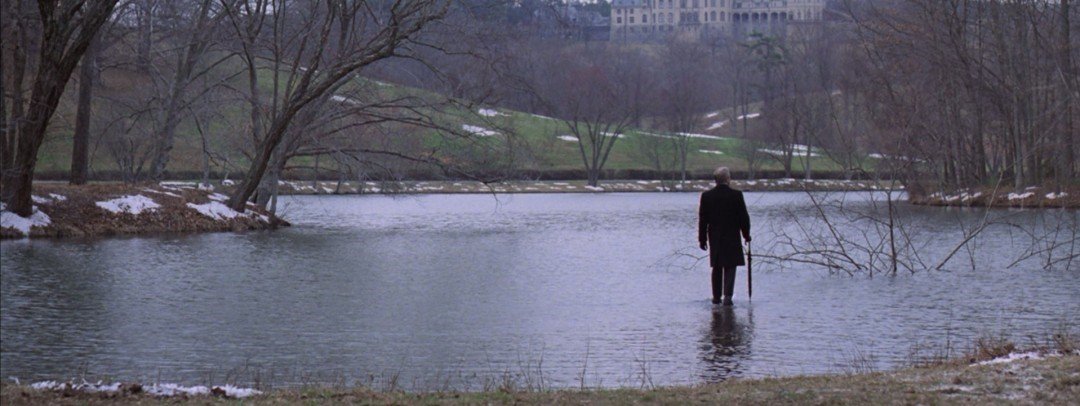From time to time, people despair their loss of a child’s faith, that magical set of beliefs, when we only needed to wish for something, to believe it would come true. I am struck by how that childhood faith remains, even among some of the most scientific minds. AJ Jacobs, in the book we have been exploring The Year of Living Biblically pushes back at the progressive stereotype of religious literalists, that they are somehow less well educated than the rest of the population. Data proves this wrong. Rather, there is something in a literalist mind that chooses to adopt a childhood faith, that magical things happen, happened before, happen now, will happen in the future. Those of us who were raised in a more mainline Christian tradition keep our scientific minds intact. We read Biblical stories as metaphor, as stories that reveal deeper truths about God, about us.
But when it comes to stories like the one Hedley read, a resurrection account, where the dead come to life, we mainline Christian struggle, and even lament, we miss our childhood faith. This recently came to my attention over lunch with colleagues as we discussed the classic 1979 film, Being There. It’s a well written, well acted, clever and often very funny script, but an ending that confuses us. Peter Sellers plays Chance (or as he is later known in the film Chauncey Gardener), a middle-aged man who has spent his entire life in a single home and the adjoining walled-in garden. Everything he knows about the outside world comes from television. Chance is a simple man, who has apparently been kept in this household to protect himself—there is a suggestion he lives with some form of a mental illness, or even how this set of circumstances arose. But when the homeowner (who may or may not be his father) dies, he is forced to make his way in the world on his own, and the world outside his garden is Washington DC.
The real comedy of Being There is that all the influential and smart people he meets mistake his calm innocence for calm assuredness. Asked his opinion about current events, Chance always responds with his observations about maintaining a garden, which in turn are interpreted as philosophical anecdotes and keen insight. Asked about the country's flailing economy, Chance responds that seasons turn, the spring follows winter. And those people who listen—first an influential lobbyist, then the President of the United States, and ultimately the entire country—hear him saying that things will get better.
The movie is, in fact, brilliant in its use of Chance as a focal character through which we observe ourselves. We laugh at the gullibility of those who seek Chance's insight, and we snicker at Chance's utter reliance on television to make it through his life. And then a thoughtful audience will use those moments to evaluate their own actions and beliefs. BUT at in the final scene…as a funeral takes place over a hill from where Chance stands beside a pond, he steps out and onto the water, walking across it and even reaching down to dip his umbrella into its depths. Chance walks on water.
Most film critics agree, the message is clear, Chance believes, like a child, he can walk on the water, and so he does. Can humans walk on water? Science says no. And I am not going to walk out on the Harbour to prove otherwise. I believe in science, in safety, in caution, in my mortality, that people die when they do things like walk on water. But Chance has not lost his innocence, his belief in goodness, that “he is hungry, someone will feed him”, he is lost, “someone will show him the way”, he lonely, “someone will be his friend”. From the moment Jesus begins his three-year mission/ministry, he talks-acts-believes likewise. He tells his followers to go from town to town, taking nothing, expecting hospitality, to eat with whomever offers a meal, to share the Good News, God has connected us to a love which lasts for an eternity, a justice that transcends reciprocity, a kinship that is deeper than race/creed/gender/wealth/religion. Jesus’ innocence is courageous, the Cross cannot contain it, the Empire cannot stop it, death is not the last word. Jesus lives.
I am drawn to what Frederick Buechner calls “the darkness of the resurrection itself, that morning when it was hard to be sure what you were seeing.” Though the past two thousand years have honed and codified our Easter acclamations, what we know from the Gospels is that the original disciples stumbled around in the half-light on that third day after Jesus’s crucifixion, confused and afraid. Was it an angel, sitting in that unlit tomb? Were those shadows in the corner grave clothes? That quiet stranger lingering outside — was he a gardener? Or someone else? Why did he look vaguely familiar? “Early in the morning, while it was still dark…” That’s where Easter really begins. It begins in darkness. It begins with fear, bewilderment, pain, and a profound loss of certainty. The creeds and clarifications we cherish nowadays came later.
The fact is, the resurrection happened in total darkness. Sometime in the predawn hours of that Sunday morning, a great mystery transpired in secret. No sunlight illuminated the event. No human being witnessed it. And even now, two thousand years later, no human narrative can contain it. It exceeds our attempts to pin it down, because it’s a mystery known only to God. Whatever the resurrection was and is, its fullness lies in holy darkness, shielded from our eyes. All we can know is that somehow, in an ancient tomb on a starry night, God worked in secret to bring life out of death. Somehow, from the heart of loss and misery, God enacted salvation.
In our Gospel story, Mary Magdalene sees Jesus first because she chooses to remain in the darkness. Peter and the beloved disciple leave when they see the empty tomb, but Mary stays, bewildered and bereft. She remains present to what is real, to what is actually happening. She does so even when what is real feels unbearable.
Jesus comes in the darkness, and sometimes it takes a long time to recognize him. He doesn’t look the way I expect him to look. He doesn’t let me cling to my old ideas. He disappears again just as I grab hold of him. But he comes, he calls my name, and in that instant, I recognize both myself and him. In a beautiful essay on the resurrection, theologian and writer Chris Barnes reminds us of what actually matters during Holy Week: “The question that Easter asks of us is not, ‘Do we believe in the doctrine of the resurrection?’ Frankly, that is not particularly hard. What the Gospels ask is not, ‘Do you believe?’ but ‘Have you encountered the risen Christ?’”
What I see in the resurrection narratives are individual people having profoundly individual encounters with Christ. The encounters don’t look identical. When Peter sees the empty tomb, he runs away. When the beloved disciple sees it, he believes without comprehension. When Mary sees it, she weeps and waits for more.
What matters, then, is encountering the risen Jesus in the particulars of our own messy lives. What matters is finding in the empty tomb the hope we need for our own struggles, losses, traumas, and disappointments. Whatever universal claims we make as Christians must begin in the rich, fertile ground of our own hearts, our own stories. Whatever acclamations we cry out on Easter Sunday must begin with a willingness to linger in the garden, desolate and alone, listening for the sounds of our own names, spoken in love. The question is not, “Why should people in general believe?” but rather, “How has the risen Christ revealed himself to you?”
This type of witness isn’t automatic or easy. It requires risk - the risk of turning towards the one who calls our name, and recognizing him for the savior he is. Often, it’s only in retrospect, only as I look back at the “gravesides” of my life, that I see my salvation. Poet R.S. Thomas describes the process this way in his poem, The Answer: “There have been times/when, after long on my knees/ in a cold chancel, a stone has rolled/from my mind, and I have looked/in and seen the old questions lie/ folded and in a place/by themselves, like the piled/graveclothes of love’s risen body.”
As one of my favorite philosophers puts it, our faith moves us beyond the realm in which we can understand and manage things. It moves us into “the sphere of the impossible,” where “only the great passions of faith and love and hope will see us through.”
But how do we encounter this presence of Christ? It’s one thing for Mary to meet Jesus in the garden. It’s another thing for you or me to encounter him now. I think there are many answers to this question. For me, I find myself experiencing God’s love calling me by name through the presence of Christ in the community of faith. I experience the presence of Christ through the love and support and affirmation I receive from other people who have experienced that life and that love and have come away from that experience transformed.
At the end of the day, it takes something of a leap for all of us to really entrust our lives to the kind of hope that God awakened in the resurrection of Jesus on that first Easter morning. I believe this is a return to that “childhood faith” we reject because we assume there is a choice between science and a faith-filled innocence. I believe in science, is using the reason, the mind God gave, I am not afraid of knowledge, of learning more about the world around me, the body God gave me. But I also know, deep in my heart, God gave me this life, this gift of relationship, this love which is timeless and eternal. Miracles do not shock me, do not disturb me. I don’t expect them, but when I see God at work, I can only offer my thanksgiving, my praise.
When we take that leap of faith, it can be frightening, because we are taking a risk, and that makes us vulnerable. But that’s how we open ourselves to the new life God brings. The leap is frightening, but when we make that leap, we find ourselves moving from a life that we have to manage and control into the arms of the God who continually offers us grace and peace and mercy and love and life. Amen.

